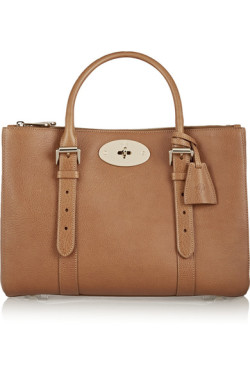The retail industry has been abuzz with the idea of personalisation, where brands aim to deliver better customer experiences by tailoring content and offers. Clever retailers are taking this one step further and enriching this customer experience by using contextualisation, which looks at the content visitors engage with or what they purchase, as well as why they did so, says Amanda McCreary.
 The luxury goods market has always been a very different beast, with their customers behaving and responding differently to mainstream consumers. The key driver for luxury purchases is emotion. The product bought, whether that’s a Mulberry bag or a Ferrari, is not bought out of necessity, but how that purchase makes the customer feel and what it says about them.
The luxury goods market has always been a very different beast, with their customers behaving and responding differently to mainstream consumers. The key driver for luxury purchases is emotion. The product bought, whether that’s a Mulberry bag or a Ferrari, is not bought out of necessity, but how that purchase makes the customer feel and what it says about them.
It has never been more important for luxury goods marketers to capture customer attention through superb digital experiences to drive and encourage emotion. Until now, these brands have been slow to embrace digital, but a few are using it to develop that deep emotional connection to their consumer.
Luxury brands that can create unique and comprehensive digital experiences, based on what is known about the visitor, will gain a considerable advantage. It’s all about delivering the right content, promotions and information to the right consumer at the right time to drive that emotional connection forward.
Personalised and tailored for luxury goods consumers
Tailored content is even more important for consumers of luxury brands, because they spend so much time researching and assessing a potential purchase. Although the vast majority of luxury item purchases are made in-store, an incredible 90% of luxury consumers are researching products before purchasing. These consumers have always wanted to feel enveloped in a very exclusive and expensive world, and contextualisation and personalisation can take this further by increasing affection and loyalty through tailored experiences.
Visitors to websites provide brands with a huge amount of information about themselves, whether or not they are ‘known’ customers. Information can be garnered from a number of areas, including the content they view, the topics they are interested in and in the actions they take. Marketers can use contextualisation to help them generate a rich, integrated view of their customer by storing this behaviour, situation, segmentation and personal information in a unified customer profile that will continue to build over time. This profile can be used to recommend content for each individual customer to enhance their overall experience and keep them engaged.
The customer journey
Converting fans and followers into customers and encouraging is crucial. Luxury brands need to use digital experiences to drive in-store visits and purchases, ensuring there is no disengagement between mobile-based browsing and a store visit with intent.
 In all likelihood, a new customer is more likely to transact in store, but the digital experience must convey that the product is worth a store visit. Driving them in-store is the key to conversion for luxury brands. Last year, research from McKinsey showed that online experiences drive real-world decision making, with more than 45% luxury purchases influenced by the web. The digital elements before an in-store conversion gives brands the chance to use data garnered from personalisation and contextualisation to recommend accessories or add-ons. By understanding what drives the customer, recommendations can be made to supplement the core purchase that we will reflect the buyer’s personality and differentiate the core product.
In all likelihood, a new customer is more likely to transact in store, but the digital experience must convey that the product is worth a store visit. Driving them in-store is the key to conversion for luxury brands. Last year, research from McKinsey showed that online experiences drive real-world decision making, with more than 45% luxury purchases influenced by the web. The digital elements before an in-store conversion gives brands the chance to use data garnered from personalisation and contextualisation to recommend accessories or add-ons. By understanding what drives the customer, recommendations can be made to supplement the core purchase that we will reflect the buyer’s personality and differentiate the core product.
Brands must exploit the customer profile information gathered in the research stage to compile relevant content and products in real-time within the site visitor’s current session that keep them on the site longer and drive a conversion.
Retaining loyalty
The objective for luxury brands should be building brand loyalty to encourage repeat purchases, combined with a strong social currency that enhances reputation. If a customer has just bought a £20,000 handbag, the brand wants the excitement that the customer feels to permeate amongst their friends and family. Not only is the consumer an ‘influencer’, showcasing the value of the product, but the reaction they attract creates a value cycle where the purchase is reinforced. This social currency of admiration is hugely important to customers, and therefore the retailers, of luxury goods. Purchasing a luxury item is largely about building your own personal brand, and that brand is only built when its recognised and coveted by others.
After a sale, brands need to keep the consumer engaged and encourage them to come back. Customer profiling and purchasing history enables retailers to create tailored and relevant engagement strategies. For new customers, it might be ten ways to wear their new purchase, or information about complimentary items. For regular buyers, it may be promoting new arrivals in the categories they like.
Contextualisation plays an important part here. Brands can use it to capture visitor data and generate a clear picture of their customers from the very first web site visit. Each connection or purchase helps to build up a richer profile and enables the retailer to customise content. Brands that look at customer behaviour both in real-time and historically across the buying journey can understand them much better than their competitors.
For marketers of luxury brands the digital experience is less about conversion and more about honouring the brand and engaging the customer. The ultimate goal here is to drive that in-store purchase and create a long-lasting relationship with the consumer. Contextualisation helps brands to understand where their customers are in their buying journey and uses this insight to create highly contextualised and relevant experiences.
Luxury consumers use style as a way to express their personality to the world and each consumer wants to feel unique and special. Coco Chanel couldn’t have put it better when she said: “In order to be irreplaceable, one must always be different.” Digital experiences can really make this happen.
Read also:
Personalisation as a marketing tool: what do brands need to know?
Using personalisation and contextual marketing to transform email marketing campaigns

 The luxury goods market has always been a very different beast, with their customers behaving and responding differently to mainstream consumers. The key driver for luxury purchases is emotion. The product bought, whether that’s a
The luxury goods market has always been a very different beast, with their customers behaving and responding differently to mainstream consumers. The key driver for luxury purchases is emotion. The product bought, whether that’s a  In all likelihood, a new customer is more likely to transact in store, but the digital experience must convey that the product is worth a store visit. Driving them in-store is the key to conversion for luxury brands. Last year,
In all likelihood, a new customer is more likely to transact in store, but the digital experience must convey that the product is worth a store visit. Driving them in-store is the key to conversion for luxury brands. Last year, 



Leave your thoughts